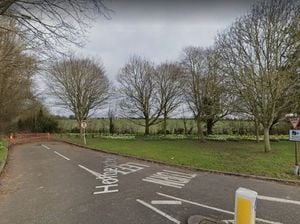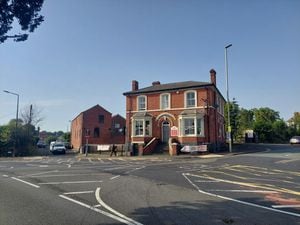Vow to protect Dudley green belt under housing plan
A huge area of green belt land could be lost in Dudley to build more than 1,000 homes in a controversial Black Country housing plan – sparking fury and concern across the town.

But council chiefs say it amounts to no more than three per cent of the town’s green belt land and they are confident they will lose no more than that.
The authority’s cabinet agreed to go out to public consultation on the draft document which has set out a need for 76,076 new homes across the region along with 565 hectares of land for employment uses by 2039.
But there is not enough brownfield space to cater for the need and the proposed loss of green space has prompted anger in Dudley amongst residents, opposition Labour councillors and the borough’s Tory MPs.
Helen Martin, Dudley’s director of regeneration and enterprise, said a number of sites – making up three per cent of the green belt – have been identified in the borough to build 1,117 homes.
Council leader Patrick Harley said rejecting all sites now would only put more green belt land at risk when inspectors reviewed the plan.
He told opposition members and borough MPs to stop “pontificating” and unite with them to protect as much of the land as possible.
Green belt sites in Dudley proposed to be released under the plan include land off Holbeache Lane/Wolverhampton Road and off Swindon Road – both in Kingswinford and Wall Heath ward – which would provide 863 homes.
Smaller sites including land Lower Guys Lane, Worcester Road in Stourbridge, Wollaston Farm and Viewfield Crescent have also been identified to provide around a further 250 houses.
In total, Dudley’s contribution to the draft Black Country Plan is to build 13,235 new homes and 22 hectares of employment land by 2039.
At a meeting on July 5, Labour group leader Qadar Zada and his colleague Pete Lowe challenged cabinet and officers on whether they were confident Dudley would lose no more than three per cent.
Councillor Simon Phipps, cabinet member for regeneration, said: “This draft plan is on the basis of what the planners feel they are able to defend at this stage.
“If that is what we are able to defend, then that is the maximum I believe we are looking to release. There is plenty of water to go under the bridge on that point.”
Helen Martin added: “The three per cent of green belt is based on the evidence we have so far and assessments carried out. A number of sites have been disregarded.
“Officers are happy they have the evidence we have put forward the sites that are appropriate and defendable.
“That does not stop an inspector reaching a different view but at this point of time, we’re not putting further sites forward. This is the maximum.”
Councillor Harley said: “The real issue here is the absurd manner of the formula for working out how many houses are needed.
“Unless the Government change that formula then local councillors will affectively have no say on what, where and how many homes are to be built in the future.
“Members of the opposition, MPs on whatever side, need to stop pontificating for a quick giveaway headline and start to be serious about helping us as a united council protect the green belt.
“If we throw out all sites now, then the planning inspectorate at Bristol could not only overrule our decision but also add in green belt sites already dismissed by our planning team.
“We have a process to go through and, let’s be clear, we can’t delay this. If we can’t defend that with the planning inspectorate we really are putting large swathes of the green belt at greater risk than they already are.
“We need a serious and well informed argument to counter this ridiculous manner of forecasting future housing needs.”
Under the Black Country Plan, around six per cent of the region’s total green belt land will be lost to provide 7,720 new homes and 47 hectares of employment land.
Walsall will provide the majority of this as it has the largest area of green belt of all four authorities.
The breakdown is:
Dudley – 1,117 homes (three per cent of green belt)
Sandwell – 171 homes (below one per cent)
Walsall – 5,418 homes (eight per cent)
Wolverhampton – 1,114 homes (five per cent)
Dudley cabinet agreed to start an eight-week public consultation from August until early October.





